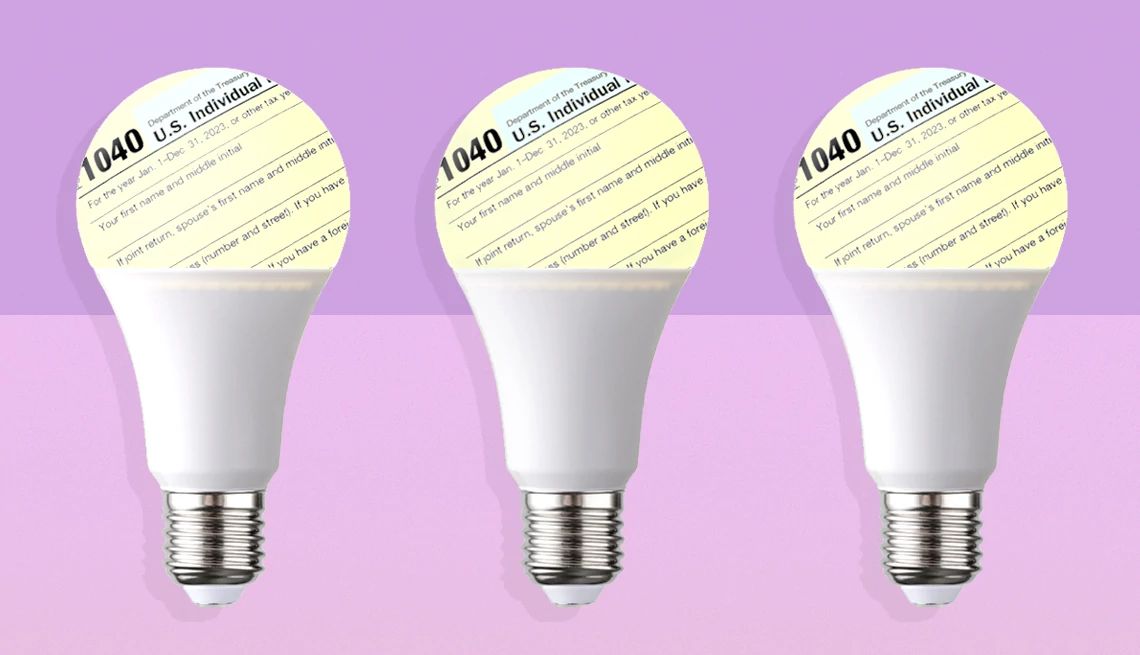Staying Fit


If you’re like most American taxpayers, by now you’ve likely filled out your 1040 tax form, held your nose and submitted your tax return with one thought in mind: good riddance.
But instead of simply holding your nose, maybe it’s time to hold that thought and dig a bit deeper.


AARP Membership— $12 for your first year when you sign up for Automatic Renewal
Get instant access to members-only products and hundreds of discounts, a free second membership, and a subscription to AARP the Magazine.
After all, your 1040 tax return is a lot more than your tax payment to Uncle Sam. It’s also a unique mirror into your personal finances. Few Americans have the emotional wherewithal to look closely into that mirror and learn from it. But your 2023 tax return gives you a special opportunity that could vastly improve the way you handle your personal finances into 2024 — and beyond.
“I had a client once tell me that every time he came to a meeting with me, he was reminded of when he went to the dentist for root canal,” says Marianela Collado, a certified public accountant and member of the personal financial planning committee of the American Institute of Certified Public Accountants (AICPA). "The value doesn’t come from the process but from reflecting on what the results are telling you.”
AARP reached out to AICPA, which provided three CPAs who are accustomed to dealing with the many complexities of tax returns. These three CPAs — two of whom are trade group executives and one of whom practices from Honolulu — helped to assemble this listing of the Top 10 things that you can learn from your completed tax return.
1. Your wages don’t all have to be taxed
When you look at your total taxable wages, that’s an opportunity to ask yourself, Am I taking advantage of all the benefits of my employer’s 401(k) plan and flexible spending account? says Collado. What’s more, she adds, are you also taking advantage of your maximum IRA contributions annually that can further boost your retirement nest egg? Or perhaps you have children with dependent care expenses?
“Any opportunity to take your wages and chip away at them through this kind of low-hanging fruit that your company offers is a no-brainer,” she says.
2. Avoid large overpayments or underpayments
If you’ve made large overpayments and expect to get lots of money back, that’s not a good thing. You probably could use the extra money during the year, rather than sending to the Internal Revenue Service (IRS). “All that says is that you’ve given an interest-free loan for one year to the federal government,” she says. “You could have been earning 5 percent on that money in a money market fund.”
Underpayments are a bad idea, too. If you owe a lot of money — perhaps even with penalty charges — that’s a signal to proactively file a new W4 form and readjust your withholding, says Collado.
3. Get more bang for charitable contributions
Since most taxpayers no longer itemize, some have had to cut back on — or even stopped making — charitable contributions. But instead of eliminating these contributions, there are ways to “time” them better so you can also earn a possible tax benefit when you itemize, says Henry Grzes, CPA, a lead manager on the AICPA’s Tax Practice & Ethics team.




































































More From AARP
How to Protect What You Collect
Tips for caring for your collectibles, including proper organization, accurately assessing the value and more
Don’t Trip These IRS Audit Triggers
Little mistakes can lead to long refund delays
These 4 Things Will Be Cheaper in 2024
From airline tickets to certain grocery staples .you
New Rules Should Simplify Shopping for Internet Plans
‘Nutrition labels’ will let you compare features, prices
Recommended for You